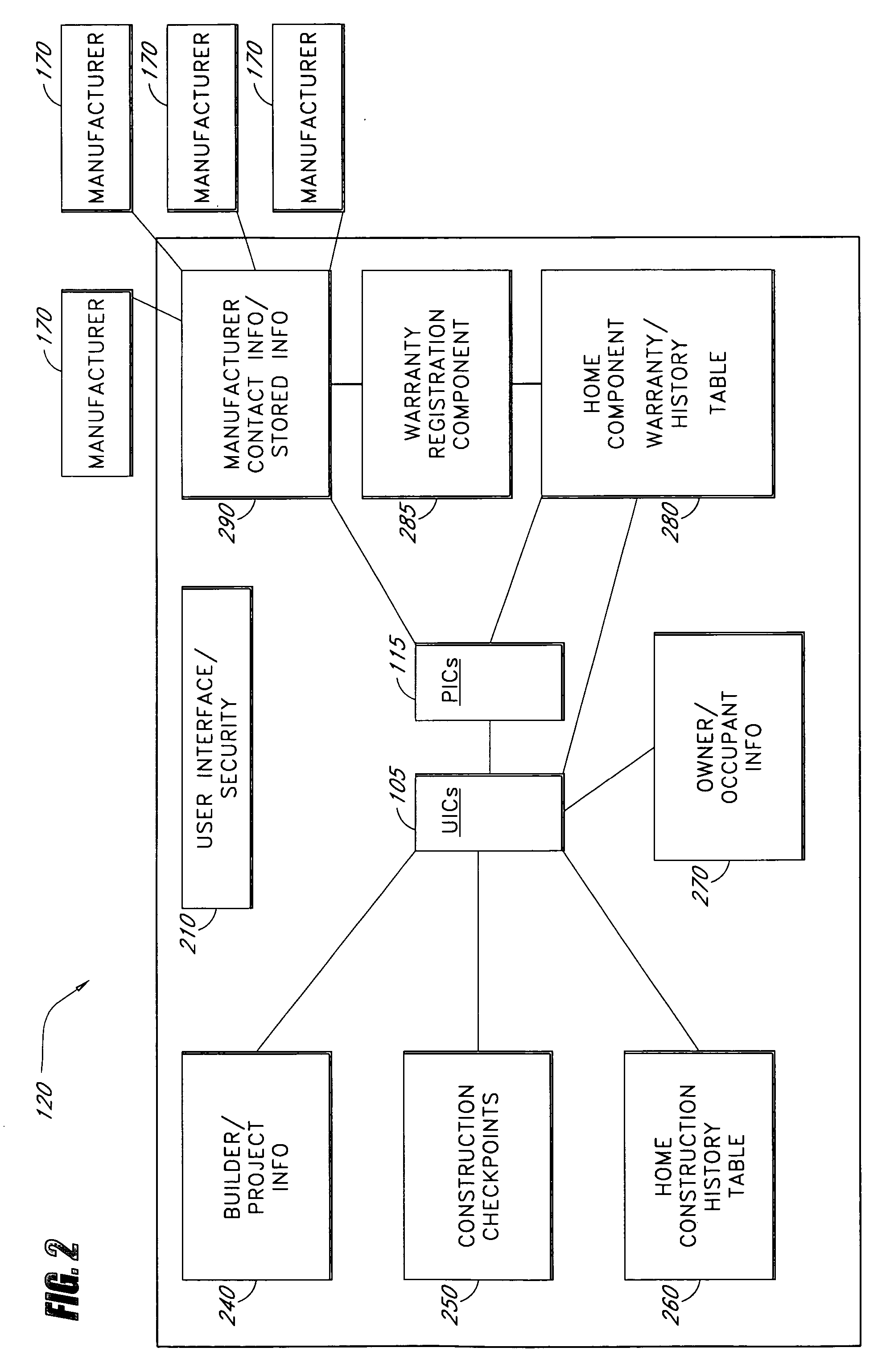Systems and methods for tracking component-related information associated with buildings
a technology for building components and components, applied in data processing applications, instruments, marketing, etc., can solve the problems of homeowner confusion about the coverage of the warranty registration, difficulty or inability to access, and other components, such as building materials, may also be frequently covered by the warranty registration, so as to facilitate the registration of the warranty
- Summary
- Abstract
- Description
- Claims
- Application Information
AI Technical Summary
Benefits of technology
Problems solved by technology
Method used
Image
Examples
Embodiment Construction
[0026] Embodiments of systems and methods are described for collecting, maintaining, and using information about construction, maintenance, and use features of real property units and their components. In particular, a central database system, accessible to builders, owners, occupants, tradesmen, inspectors, manufacturers and other authorized parties of interest receives, maintains and provides information about real property units and their components.
[0027] Although the systems and methods have mainly been described for purposes of this disclosure as pertaining to homes, such as single-family detached residences, the systems and methods may pertain, in a variety of embodiments, to additional or alternative types of real property units. For example, in various embodiments, the central database system may receive, maintain, and provide information about duplexes and other multi-unit buildings, townhouses and other attached units, condominiums, apartments, as well as other types of ...
PUM
 Login to View More
Login to View More Abstract
Description
Claims
Application Information
 Login to View More
Login to View More - R&D
- Intellectual Property
- Life Sciences
- Materials
- Tech Scout
- Unparalleled Data Quality
- Higher Quality Content
- 60% Fewer Hallucinations
Browse by: Latest US Patents, China's latest patents, Technical Efficacy Thesaurus, Application Domain, Technology Topic, Popular Technical Reports.
© 2025 PatSnap. All rights reserved.Legal|Privacy policy|Modern Slavery Act Transparency Statement|Sitemap|About US| Contact US: help@patsnap.com



